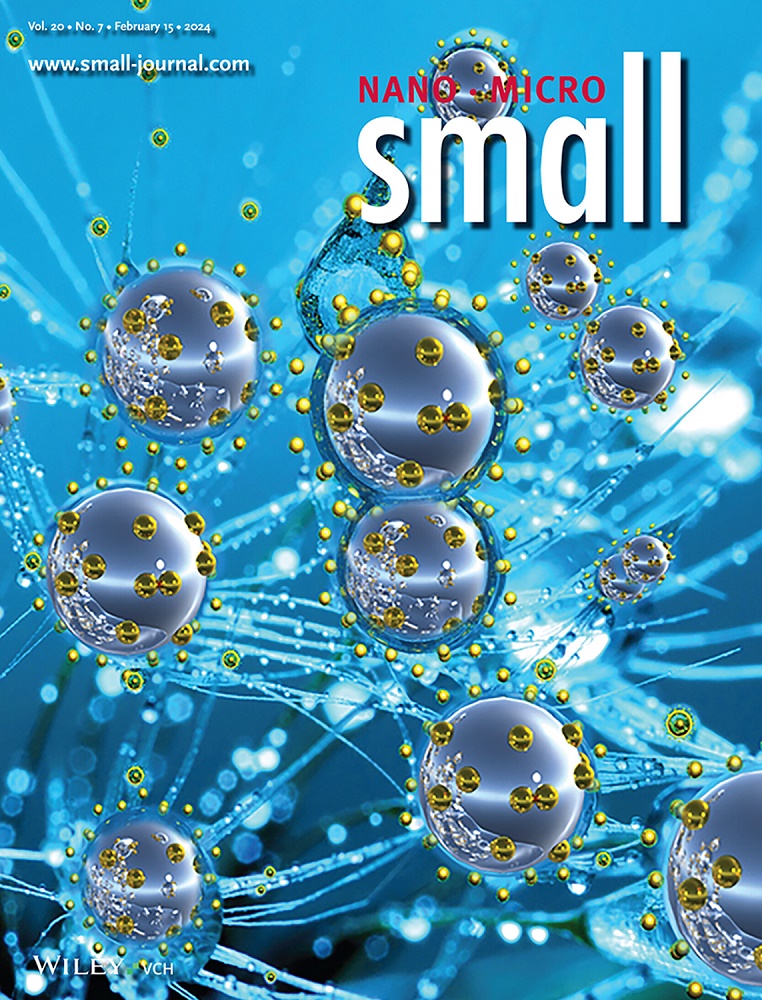高容量长循环寿命锂硫电池用快速氧化还原动力学的硫化聚丙烯腈阴极。
IF 12.1
2区 材料科学
Q1 CHEMISTRY, MULTIDISCIPLINARY
引用次数: 0
摘要
硫化聚丙烯腈(SPAN)的准固态反应过程已成为缓解锂硫电池(li -硫)中多硫穿梭效应的一种有前景的策略。然而,由于缓慢的氧化还原动力学导致溶剂化引起的结构重排,SPAN阴极在醚基电解质中的实际应用仍然具有挑战性。本文通过聚苯乙烯(PS)模板的热解转化和碳纳米管(CNTs)网络集成,制备了一种分层结构的复合材料(HSPAN)。这种工程结构建立了双电子离子传输通道,协同增强硫氧化还原动力学,抑制短链硫溶解,并在醚电解质中实现稳定的充放电循环。优化后的HSPAN阴极在1c速率下的比放电容量为1145 mAh g⁻¹,硫含量为50%,在800次循环中保持82%的容量。密度泛函理论(DFT)计算表明,硫化处理通过调节聚丙烯腈的电子结构,显著缩小了HOMO-LUMO能隙,从而提高了材料的电导率和氧化还原活性,为设计高性能锂硫电池阴极提供了理论基础。这项工作为硫化聚合物的溶剂化动力学提供了基本的见解,并通过合理的电极工程展示了实用高能量密度Li-S电池的可行途径。本文章由计算机程序翻译,如有差异,请以英文原文为准。
Sulfurized Polyacrylonitrile Cathodes With Rapid Redox Kinetics for High-Capacity and Long-Cycle-Life Lithium-Sulfur Batteries.
The quasi-solid-state reaction process in sulfurized polyacrylonitrile (SPAN) has emerged as a promising strategy to mitigate the polysulfide shuttle effect in lithium-sulfur (Li-S) batteries. However, the practical implementation of SPAN cathodes in ether-based electrolytes remains challenging due to solvation-induced structural rearrangement stemming from sluggish redox kinetics. Herein, a hierarchically structured composite (denoted as HSPAN) is developed through pyrolytic transformation of polystyrene (PS) templates coupled with carbon nanotubes (CNTs) network integration. This engineered architecture establishes dual electron-ion transport channels, which synergistically enhance sulfur redox kinetics, suppress short-chain sulfur dissolution, and enable stable charge/discharge cycling in ether electrolytes. The optimized HSPAN cathode delivers a specific discharge capacity of 1145 mAh g⁻¹ at 1 C rate with a sulfur content of 50%, maintaining 82% capacity retention over 800 cycles. Density functional theory (DFT) calculations reveal that the sulfurization treatment significantly narrows the HOMO-LUMO energy gap by modulating the electronic structure of polyacrylonitrile, thereby enhancing the conductivity and redox activity of the material, providing a theoretical basis for designing high-performance lithium-sulfur battery cathodes. This work provides fundamental insights into the solvation dynamics of sulfurized polymers and demonstrates a viable pathway toward practical high-energy-density Li-S batteries through rational electrode engineering.
求助全文
通过发布文献求助,成功后即可免费获取论文全文。
去求助
来源期刊

Small
工程技术-材料科学:综合
CiteScore
17.70
自引率
3.80%
发文量
1830
审稿时长
2.1 months
期刊介绍:
Small serves as an exceptional platform for both experimental and theoretical studies in fundamental and applied interdisciplinary research at the nano- and microscale. The journal offers a compelling mix of peer-reviewed Research Articles, Reviews, Perspectives, and Comments.
With a remarkable 2022 Journal Impact Factor of 13.3 (Journal Citation Reports from Clarivate Analytics, 2023), Small remains among the top multidisciplinary journals, covering a wide range of topics at the interface of materials science, chemistry, physics, engineering, medicine, and biology.
Small's readership includes biochemists, biologists, biomedical scientists, chemists, engineers, information technologists, materials scientists, physicists, and theoreticians alike.
 求助内容:
求助内容: 应助结果提醒方式:
应助结果提醒方式:


